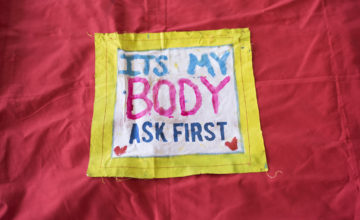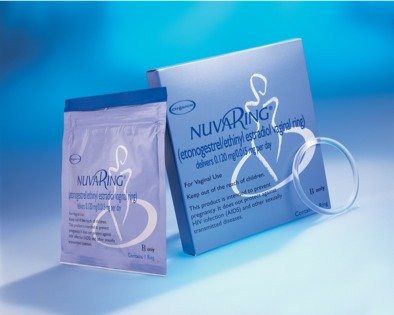
One of my kids has red hair. So when I discovered the upper estimate of the population born with intersex traits is 1.7% — similar to the number of red-haired people in the world — it really hit home how common intersexuality is. You certainly know — or at the very least have met — intersex people, whether you realize it or not. Maybe you are intersex yourself! According to The Intersex Society of North America (ISNA), some people live and die with intersex anatomy without anyone — including themselves — ever knowing.
That’s because “intersex” is an umbrella term that encompasses a vast array of possible natural variations in the development of sex characteristics (genitals, gonads and/or chromosomal patterns) that do not fit typical binary notions of male or female bodies. For example, a person might be born appearing to be female on the outside, but has mostly male-typical anatomy on the inside. Or someone may be born with genitals that seem to be in-between what’s typically considered male and female. Or one may be born with mosaic genetics, wherein some of their cells have XY chromosomes and some of them have XX. (Keep in mind, these biological sex characteristics are distinct from a person’s gender identity or sexual orientation; an intersex person may identify as female, male, both or neither, and may be straight, gay, lesbian, bisexual, pansexual or asexual.)
ISNA likens this sex characteristics spectrum to the color spectrum:
There’s no question that in nature there are different wavelengths that translate into colors most of us see as red, blue, orange, yellow. But the decision to distinguish, say, between orange and red-orange is made only when we need it — like when we’re asking for a particular paint color. Sometimes social necessity leads us to make color distinctions that otherwise would seem incorrect or irrational, as, for instance, when we call certain people “black” or “white” when they’re not especially black or white as we would otherwise use the terms.
In the same way, nature presents us with sex anatomy spectrums. Breasts, penises, clitorises, scrotums, labia, gonads—all of these vary in size and shape and morphology. So-called “sex” chromosomes can vary quite a bit, too. But in human cultures, sex categories get simplified into male, female, and sometimes intersex, in order to simplify social interactions, express what we know and feel, and maintain order.
So nature doesn’t decide where the category of “male” ends and the category of “intersex” begins, or where the category of “intersex” ends and the category of “female” begins. Humans decide.
Unfortunately, that has meant that, historically, many binary-minded doctors and parents of intersex kids have insisted on medically unnecessary “normalizing” surgeries which attempt (and often fail) to force children — without their educated consent — into one of two neat little boxes: either “male” or “female.” Watch the “Intersex” episode of Buzzfeed’s “Follow This” series on Netflix for heartbreaking examples of this. Or read the following description by a writer for the Intersex Network of what it can be like to be intersex in a binary world:
We are assigned male or female despite our sex being unknown. We are encouraged and oftentimes forced into gender roles of man and woman. We are surgically altered so that as a man we have as few female features as possible and as a woman we have as few male features as possible. We are thought to be mentally ill if we reject our gender role and sex assignment. We are offered no respite from the sex or gender binary expectations of society. There are no provisions for behaviors other than man or woman and no sexs other than male or female for us to live out. There is a constant social pressure for us to see ourselves as having a stake in the binary despite undeniable biological evidence to the contrary.
In short, our differences are the subject of constant erasure by a society that harbors a deep homophobic fear, even hatred, of our biology. We are the subject of constant medical experimentation that has the primary aim of eliminating our differences from the ways it is possible to be human.
Fortunately, intersex rights activists and sex educators have made great strides in discouraging the medical community (and parents of intersex kids) from such kneejerk procedures while educating them on the specific healthcare needs and basic human rights of the intersex community. The United Nations’ “Free & Equal” campaign has a great list of action points for promoting intersexuality rights (see page 2). And IntersexDay.com has many articles on the topic from an array of voices to further educate yourself.
















